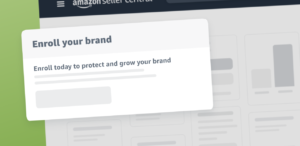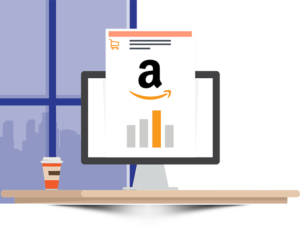
Unlocking Amazon Success: Mastering Total ACOS Optimization
Introduction: In the dynamic realm of Amazon advertising, success hinges on mastering key metrics, and
To perform essential e-commerce tasks like adding products and managing inventory, you need access to the right tools and Amazon Seller Center dashboards. In the Amazon store, the Amazon Seller Center is like an online headquarters for maintaining your account, tracking orders, downloading business reports, and much more.
It might seem like a lot to navigate, but in this tutorial, we’ll give you a quick tour of the top tools you can start leveraging today.

Technically, Seller Central isn’t a single dashboard—it’s a multifaceted tool and centralized hub with shortcuts to lots of dashboards, tools, and resources, such as Seller Forums, the Sales dashboard, and the Account Health dashboard, to name a few.
You can configure your Seller Central account to streamline operations like pricing products, shipping orders, and restocking inventory.
Get access to Seller Central by signing up for an Amazon Seller Center. Choose a Professional selling plan and enroll in Brand Registry to unlock access to all the tools we’ll cover below. Some are also available through the Individual selling plan.
Get to know Amazon Seller Central
To access your Amazon seller homepage, sign into Seller Central using your registered email and password after you’ve set up your Amazon seller account. Once you’ve logged in, you can get started with these operations.
How can you check to make sure you stay compliant as you sell domestically and in other countries? Keep an eye on alerts and notifications within your Seller Central homepage. You can also visit the Account Health dashboard under the Performance tab.
The Account Health dashboard is home to performance targets related to customer service and shipping. You can also use it to check your compliance with Amazon policies. Use the Account Health dashboard to make sure your business stays in good standing so you can continue to sell in the Amazon store.
Learn how to create sign-ins for additional account users in this video guide to setting up permissions.

How do you see your sales as an Amazon seller? The homepage of your Amazon Seller Center account provides an overview of sales and units sold. For a deeper dive, access the Sales dashboard.
To open your Amazon Seller Center dashboard, click on Business Reports in the Reports tab. You can use this interface to monitor sales performance and make data-driven decisions to improve your sales strategies. You can also find and download Amazon sales reports.
Unlock more insights using Brand Analytics, an Amazon tool with multiple dashboards for digging into the details of customer interactions, such as search terms, aggregate demographics, and purchasing patterns. Get downloadable reports on repeat purchases, multi-unit purchases, and more.
Pro Tip
Track and forecast sales trends with Product Opportunity Explorer
Wouldn’t it be great if there was an e-commerce tool you could use to zero in on product ideas lots of customers want, but aren’t available from many online sellers? Identify pockets of high-demand, low-competition products using Product Opportunity Explorer—an Amazon tool for exploring sales trends across product categories and niches. Learn more and test it out
What search terms could you add to listings to reach more of your intended audience? The Listing Quality dashboard provides insights into product listing performance with key indicators like conversion rates and customer reviews. Reviewing this info can reveal opportunities to optimize listings for better visibility. Find the Listing Quality dashboard by clicking Improve Listing Quality under Catalog.
One way to create great product listings is to use the A+ Content Manager to add videos, comparison charts, and other advanced elements. Include high-quality lifestyle imagery and background info for your business to vividly share products with customers and show them what your brand is all about.
Learn more and create Amazon A+ Content
Select Manage Inventory under the Inventory tab to search, view, and update listings. Here, you can update your offer information, perform bulk actions, and configure the Manage Inventory page to suit your business needs.
The Manage Orders dashboard under the Orders tab allows you to see shipped, pending, unshipped, and canceled orders, as well as notifications about issues urgently needing your attention, such as refund requests.
If you use Fulfillment by Amazon services, you can consult the FBA dashboard to check in on tracking and updates for FBA sales and shipments. From this landing page, you can also manage FBA inventory and view recommendations for products to enroll in FBA. Find the FBA dashboard under the Inventory tab, scroll down to Fulfillment by Amazon, and then click FBA.
Amazon FBA dashboard overview
Learn the lingo
Inventory Performance Index (IPI)
If you have a Professional Amazon seller Center plan and store inventory at an Amazon fulfillment center, you’ll receive an Inventory Performance Index score to help you manage FBA inventory. Think of IPI as a scale for tracking inventory and balancing stock levels. Ideally, you can meet customer demand while avoiding excess inventory, even during peak sales periods. Learn more about IPI
You can check product reviews and ratings in the Amazon Seller Center using the Customer Reviews tool. Gather customer feedback to get ideas for improving products or expanding your offerings.
To stay connected and manage your business on the go, download the Amazon Seller Center app on your mobile device. Monitor sales, respond to customer messages, manage inventory, and even create new listings, all from the palm of your hand.
Learn more and download the app
Did you know?
You can reach business customers through B2B Central.
You can use the Amazon Business program to sell directly to business customers. Amazon B2B Central gives you dashboards for managing business-to-business sales. You can generate graphs and tables to identify trends and turning points, compare B2B and non-B2B sales, and gain insights into the types of customers buying from you by industry, region, or size. Learn more about Amazon B2B selling
It can pay off to explore all Amazon Seller Center has to offer and configure your dashboards by adding the widgets you use most often. Tap into resources like Seller Forums and Seller University for more dashboard tutorials and help topics. If you’re just starting, learn more about how to sell online, or visit this beginner’s guide to selling in Amazon stores. Visit our services page or contact us to get any service. Also, visit the careers page for new opportunities. You can find more information like this here.

Introduction: In the dynamic realm of Amazon advertising, success hinges on mastering key metrics, and

Building and managing a unique brand management can be tricky. Amazon Brand Registry is here

Introduction: Welcome to the dynamic world of e-commerce! If you’ve set up your Amazon store

Learn about crafting high-performance product listings in the Amazon store with this guide. What can